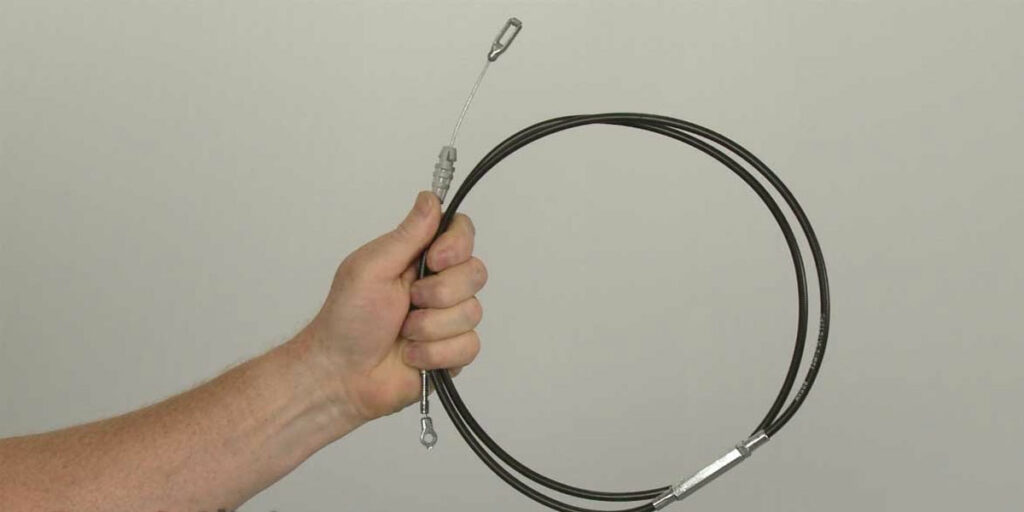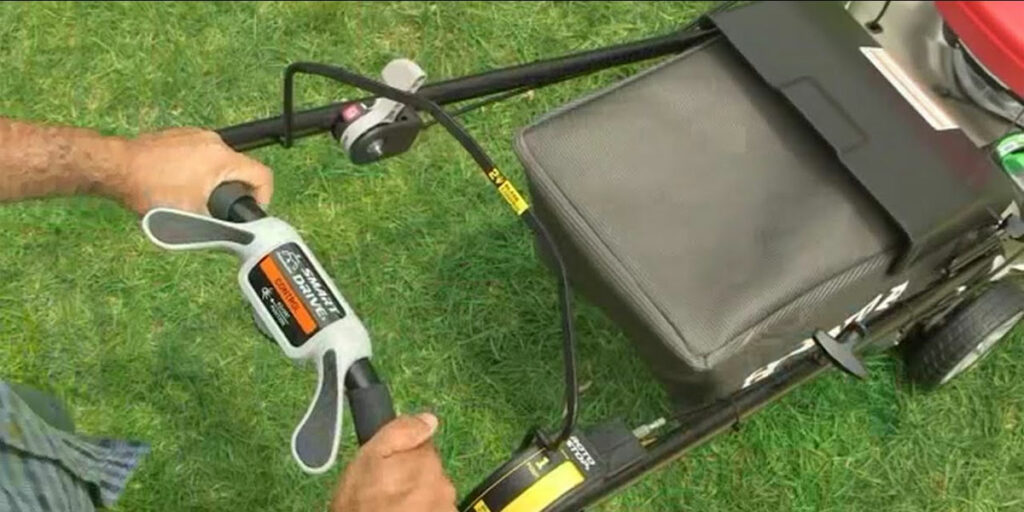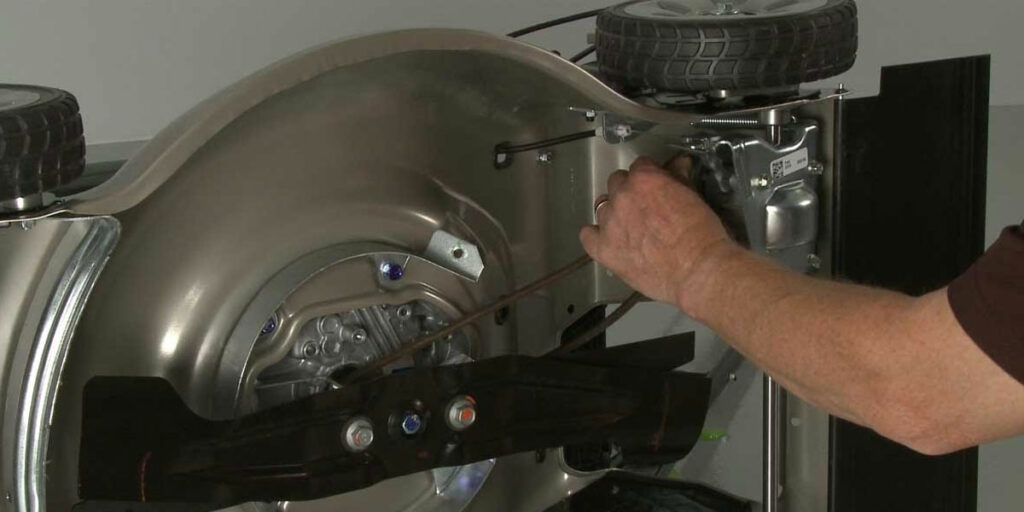How To Adjust Self Propelled Honda Lawn Mower To Make It Faster

If you think a slow wi-fi is frustrating, you’ve never tried mowing the lawn with a slow and sluggish lawnmower. A lawnmower is one of the highly used home appliances that allow for efficient grass-cutting. However, even the toughest of home appliances tend to wear out over time. Similarly, a lawn mower tends to slow down over time if not taken care of properly.
Therefore, let’s take a look at some of the common causes why your lawnmower has slowed down. This article will guide you on adjusting a self-propelled Honda lawn mower to make it faster and always lay down a few possible fixes to help eliminate the problem.
Causes Of Slow Lawn Mower
There could be several reasons why your lawn mower slows down or loses power when uphill. However, here are some of the common causes of why your lawnmower may be running a bit rough at times. A common phenomenon is a residue resulting from old fuel being left in the tank. This residue tends to create a restriction on the carburetor. The simple solution to tackle this problem is using fresh fuel when filling the tank, followed by a fuel stabilizer to maintain the fuel quality.
Cleaning the carburetor using a carburetor solvent can help eliminate the clog. However, if cleaning is ineffective, a carburetor repair kit comes in handy to replace some of the components. Another reason your mower may lose power and slow down is old or bad fuel that creates a clog in the fuel filter, causing the engine to run rough. If this is the case, replace your fuel filter at once.
A faulty spark plug is another major cause why you have a slow lawnmower. Due to the carbon build-up and a weakened electrode, your spark plug eventually degrades over time. This leads to engine stalling. To rule this out, inspect the spark plug for damage or wear. Also, you can use an ignition tester to help determine whether the spark plug is defective or not.
Adjusting The Self Propelled Honda Lawn Mower
If a Honda mower won’t self propel, the Smart Drive cable may need to be adjusted to stop a slipping belt. Though every Honda self-problem is as good as they come, they still require maintenance. However, an incorrect diagnosis will end up becoming a huge financial burden for you. There are numerous tests available in the market that can detect whether your mower and its components are intact. However, these tests need to be executed to perfection to avoid unnecessary replacing of parts or loss of time and money.
Here are some of the ways of adjusting the self-propelled Honda lawnmower
1. Drive Cable

The drive cable connects the SmartDrive control to the engine transmission. When the SmartDrive control paddles are pushed down, the cable pulls the transmission, pivots, and tightens the belt to engage the wheels. This is the general mechanism of any Honda lawnmower. The Honda lawnmower uses different setups, so you’ll have to work a bit to locate the drive cable.
The HRXusese a bail lever as stop/start control and a speed adjustment lever beside the throttle lever. The Honda Smart Drive uses a single control on the handlebar; this self-drive type is a little less difficult to adjust.
To adjust the drive cable, follow the steps given:
Step 1: Remove the plug wire
Step 2: Turn off the gas
Step 3: Turn the mower over with the carburetor side facing up, stops gas, and leaks oil on the floor.
Step 4: About midway to the drive cable is an adjuster and a jam nut
Step 5: Loosen the jam nut with a 10 mm wrench
Step 6: Don’t push the SmartDrive and pull the mower backward to feel the resistance and ensure that the wheels don’t lock up.
Step 7: Mark the adjuster
Step 8: Tighten the adjuster one revolution
Step 9: Don’t engage the SmartDrive and pull the mower backward to see the wheels don’t lock up.
Step 10: Repeat the process of tightening the adjuster cable until you see that the wheels aren’t locking up
2. Adjusting the HRX
The HRX uses a bail lever as stop/start control and a speed adjustment lever beside the throttle lever. This means it has an adjustment screw right on the top of the speed control panel. To adjust the HRX, follow the steps given.
Step 1: Remove the plug wire.
Step 2: Turn off the gas
Step 3: Turn the mower over with the carburetor side facing up, stops gas, and leaks oil on the floor.
Step 4: Set the speed to high
Step 5: Loosen the jam nut with a 10 mm wrench
Step 6: To feel the resistance, don’t push the SmartDrive and pull the mower backward and ensure that the wheels don’t lock up.
Step 7: Pull the cable until the cable slack is gone.
Step 8: When the cable slack is no longer present, tighten the jam nut
Step 9: Test reverse to ensure that the wheels don’t lock up
Step 10: Rev just until you hit the sweet spot
Step 11: Tighten the jam nut once you find the ideal combination
3. Honda Smart Drive


As we mentioned above, the Honda SmartDrive uses single control on the handlebar. This is why it is easier to adjust compared to the HRX. The majority of the time, your mower slows down because of a stretched cable. The drive cable is composed of an outer cable and an inner cable. The internal cable is responsible for performing the majority of the tasks and eventually stretches over time.
A simple solution to all this is just removing the access cable. However, when using a Honda lawnmower, you will need to fit an adjusting screw in the middle of the cable. Doing so will split the wire into two, and then by adjusting the screw anticlockwise, it takes up the slack on the inner braided cable.
To adjust the honda smart drive cable, use the following steps.
Step 1: Remove the plug wire.
Step 2: Turn off the gas
Step 3: Turn the mower over with the carburetor side facing up, stops gas, and leaks oil on the floor.
Step 4: Open the jam/lock nut using a 10 mm wrench.
Step 5: Screw the adjuster anticlockwise to remove the slack and gain more drive power
Step 6: Adjust it until it is comfortable to pull the mower backward. So keep pulling back your mower and adjusting the screw until you find the sweet spot.
Step 7: When you find the sweet spot, tighten the jam nut to keep it dialed in.
4. Drive Axle
The drive axle, commonly known as the trans-axle, is the engine transmission and axle combinations. The axle and transmission are one single unit and work as a whole. However, if you have a worn-out trans-axle, you will have to replace the entire unit with a new one. There are no separate parts available for a trans-axle, and you will have to completely swap out your current axle for a new one in case of malfunction. The trans-axle has pins that transfer the power to the wheels. Similarly, it is spring-loaded, which allows the mower to move back and forth with little resistance. However, these pins function under extreme stress and tend to wear out over time.
5. Drive Belt


A lawnmower goes through the roughest of conditions, so the drive belt goes through immense wear and tear and eventually gets stretched. A stretched belt will not transfer the engine power to the wheels and slow down your mower. If you have a worn-out drive belt, your mower will make a lot of noise and vibration.
Step 1: To check the drive belt, follow the steps given.
Step 2: Remove the plug wire.
Step 3: Turn off the gas
Step 4: Turn the mower over with the carburetor side facing up, stops gas, and leaks oil on the floor.
Step 5: Check the belt for wear
Step 6: Now turn the blade with your hand
Step 7: See that the drive belt deflects by no more than ½ inch.
Step 8: If the deflection is over ½ inch, then it will cause your mower to slow down.
Conclusion
We hope our article was able to help you gain an insight as to why your lawnmower slows down. Note that these fixes are mentioned as per the severity of the problem and should be applied accordingly. These are some of the easy solutions that can help you get your Honda mower engine running at the usual speed. However, if none of these fixes work, contact a qualified engineer at the earliest. If after all of this, you are looking at buying a Mower, consider the Honda HRR 216K9VKA or check out our best honda mowers guide to buy for your yard.
FAQs







Is their any way to adjust handles on hrc 216 3hxa i`m short person.
also can i adjust the speed to 1 mph or less . when i need to move forward ,around plants and trees.
Thanks Bill P